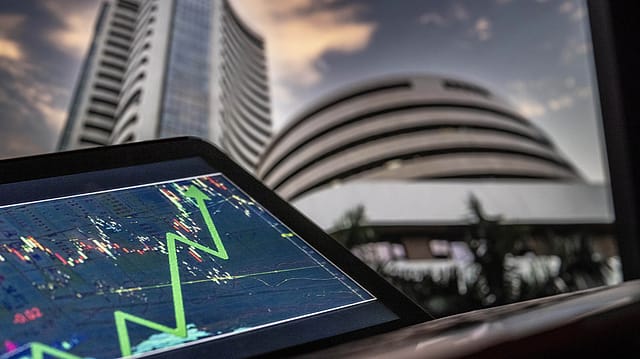From ₹872 to ₹1,161: This PSU stock surges 33% in 6 sessions; did you miss the rally?
ADVERTISEMENT

Shares of Cochin Shipyard rallied over 7% to hit a fresh all-time high of ₹1,160.90 on the BSE on Monday after the state-owned shipbuilding informed exchanges that it signed a repair agreement with the United States Navy. The PSU stock has maintained an uptrend for the last six sessions and jumped more than 33% from ₹872 level at the end of trade on March 28, following eight weeks of consolidation. In comparison, the BSE Sensex has risen 1% during the period under review, while the S&P BSE Midcap index climbed over 2% in the same time. Cochin Shipyard, which made its stock market debut on August 12, 2017, currently trades 168% higher than its initial public offering (IPO) price of ₹432.
At 11:45 AM, Cochin Shipyard was trading 6.9% higher at ₹1,155.70, with a market capitalisation of ₹30,404 crore. The stock opened higher at ₹1,104.95, up 2.2% against the previous closing price of ₹1,080.65 on the BSE. During the session so far, the midcap stock surged as much as 7.4%.
The share price of Cochin Shipyard has zoomed 395% in less than a year, rebounding from its 52-week low of ₹234.53 on May 25, 2023. The midcap stock has gained 67% in the calendar year 2024, whereas it added 120% in six months and 34% in a month.
December 2025
The annual Fortune 500 India list, the definitive compendium of corporate performance, is out. This year, the cumulative revenue of the Fortune 500 India companies has breached $2 trillion for the first time. Plus, find out which are the Best B-schools in India.
“The stock is maintaining a higher high-low pattern in the medium term and holding above an upward sloping trendline, indicating an uptrend in the medium term,” Axis Securities says in a technical report released on April 1. “The daily strength indicator RSI is in a bullish mode, holding above its reference line and the 50 mark, indicating a positive bias in the stock. The stock consolidated within a 200-point range, and post-breakout, our target will be set at ₹1,110-1,185,” the report notes.
In an exchange filing on April 6, Cochin Shipyard says, “It has signed the Master Shipyard Repair Agreement (MSRA) with the United States Navy. The MSRA is a non-financial agreement and is effective from April 05, 2024.”
The agreement will facilitate repair of the U.S. Naval vessels under the Military Sealift Command in Cochin Shipyard. “It has been qualified for entering into the MSRA after a detailed evaluation process and capability assessment by the U.S. Navy – Military Sealift Command,” the release highlights.
Earlier in February 28, Prime Minister Narendra Modi had inaugurated the first indigenously developed and built hydrogen fuel cell ferry constructed by Cochin Shipyard as a pilot project to demonstrate the technology for the maritime sector. As per the company, fuel cell powered vessel will have zero emission, zero noise and energy efficient, which will reduce the effect of global warming. “The inauguration of this project will provide impetus for using hydrogen in marine application as envisaged under National Green Hydrogen Mission and early adoption of hydrogen fuel cell technology in the marine sector will provide it a global competitive advantage where by meeting sustainable green energy aspiration of our nation for net zero emission,” it said in the regulatory filing.
Formed in 1972, Cochin Shipyard is a government-owned Miniratna Central Public Sector Enterprise under the administrative control of the Ministry of Ports, Shipping and Waterways. It operates a shipyard designed and constructed under technical collaboration with Mitsubishi Heavy Industries, Japan.
In the third quarter ended December 31, 2023, Cochin Shipyard reported a 121.4% year-on-year rise in consolidated net profit at ₹244.4 crore, while revenue from operations climbed 64.6% annually to ₹1,056.4 crore during the quarter. It also declared a second interim dividend of ₹3.50 per equity share of ₹5 each fully paid-up (70%) for the financial year 2023-24.
(DISCLAIMER: The views and opinions expressed by investment experts on fortuneindia.com are either their own or of their organisations, but not necessarily that of fortuneindia.com and its editorial team. Readers are advised to consult certified experts before taking investment decisions.)
